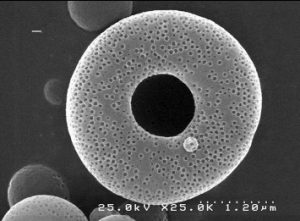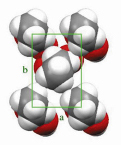
Vue 3D du dispositif
Un dispositif interne de SAXS (diffusion de rayons X aux petits angles) a été spécifiquement conçu au NIMBE/LIONS pour des mesures de haute sensibilité.
Le générateur est une anode tournante en cuivre Rigaku RUH3R, avec un filament à focalisation fine.
L’optique est composée d’un miroir multicouche collimateur Xenocs, couplé à des fentes cristallines hybrides faites maison.
La distance source-échantillon est d’environ 200 cm. Afin de réduire les quantités d’air entre l’échantillon et la chambre à vide, un nez rétractable a été conçu, qui permet de modifier l’environnement de l’échantillon. Sur ce dispositif, il est ainsi proposé :
- un support capillaire multi-positions,
- un support de poudre,
- un système de chauffage,
- un système thermostaté,
- une chambre de circulation,…
La taille du faisceau sur l’échantillon est de 0,8 mm x 0,8 mm et le flux de rayons X de l’ordre de 100×106 ph/s. La chambre à vide contient un obturateur équipé d’une photodiode calibrée.
La distance au détecteur est de 120 cm, et la gamme couverte en nombre d’onde q va de moins de 10-2 Å-1 à 0,7 Å-1.
Voir : What is measured in a Small Angle X-ray Scattering (SAXS) ?
Detector :
We use a Mar 300, automatic image plate reader, that produce a good resolution (0.150 mm), a good sensitivity (efficienty around 90%), but a high background level.
Ins some cases, a gas detector can be used, with a very low background level.

Position de l’échantillon

Multi position capillary sample holder, and a view of the retractable nose.<
Reference samples :
- Lupolen is a solid polymer, wich produce a slope at I = 6cm-1
- Tetradecanol, or commonly myristyl alcohol, is a straight-chain saturated fatty alcohol, with the molecular formula C14H30O, and organized as a well structrured lamellar phases. SAXS spectra gives very fine peaks. First order is 0.1581 Å-1

Data treatment
Two softwares are developed for the data treament:







